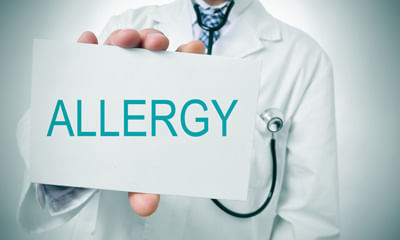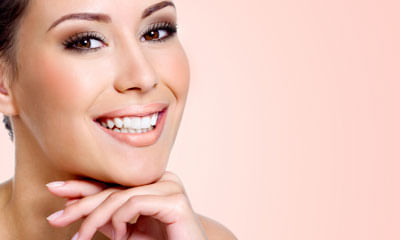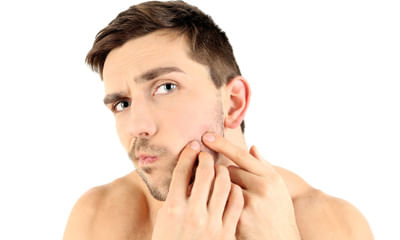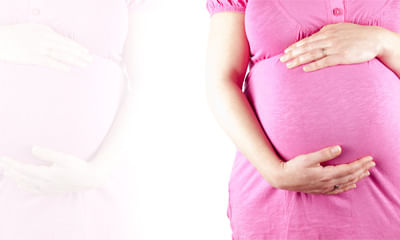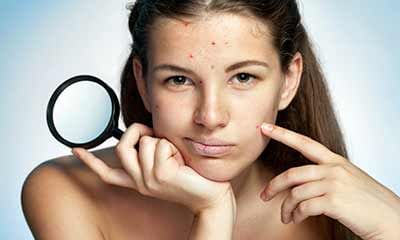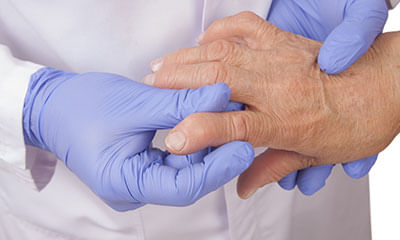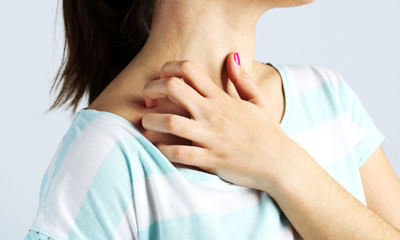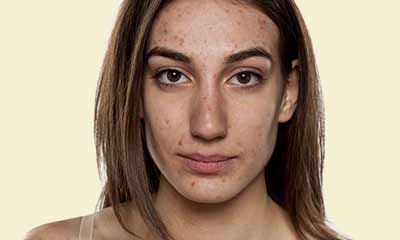Oral Steroid Side Effects
Is petril plus a steroid and what are the side effects of this medicine if taken for months also I have been taking nitr ...
Ask Free Question
Hi, lybrate user, Petril plus ,being a sleep stimulator, a safe drug without hurting your vital organs. You may take homoeo medicines to ease insomnia without side effect, being gentle, rapid and safer to act. Tke , care.
I have been using tropical steroid cream on my face for 4 years, but now my face skin is getting red and swelling. If I ...
Ask Free Question
prolonged use of topical steroids on face leads to a condition called tsdf in which there is Redness on face and skin becomes extremely sensitive. Consult a dermatologist immediately to stop further damage to your face
My skin around the corners of my nose and just below the lower lip appears to be unusually darker than the rest of my fa ...
Ask Free Question
Hi, please stop using eumosone m cream. It contains a steroid and can give side effects if used without a doctor's supervision. Flaking and pigmentation over nose corners and below lips can be due to seborrheic dermatitis. It would require dermatologist assessment and treatment. You could use anti dandruff shampoo to clean the flakes twice a week during bath. Niacinamide can be tried for pigmentation. Do consult your local dermatologist for the best treatment advice.
My 6 year old daughter is suffering from wheezing and cough. On and off since last 2 years. She was absolutely fine duri ...
Ask Free Question
If that doesn't work please follow these herbal combination for complete cure kumar kalyan ras 1 tablet twice a day sitopiladi avleh 3 gm's twice a day.
Can I apply noskurf lotion on my forehead slightly? Because I have pimples on my forehead can I apply there? Please kind ...
Ask Free Question
It is not to be used on face. Pimples, also known as acne, are primarily caused by a combination of factors involving the skin's oil glands, hair follicles, bacteria, and hormonal changes. Here are some of the common causes of pimples: 1. Excessive sebum production: sebum is an oily substance produced by the sebaceous glands in the skin. When the sebaceous glands produce too much sebum, it can clog the hair follicles, leading to the formation of pimples. 2. Clogged pores: the hair follicles or pores can become clogged with dead skin cells, dirt, and other debris. When this happens, it creates an environment where bacteria can thrive, causing inflammation and resulting in pimples. 3. Bacterial activity: the skin is home to bacteria, including propionibacterium acnes (p. Acnes). This bacterium feeds on the sebum produced by the skin and can multiply rapidly in clogged hair follicles, leading to inflammation and the formation of pimples. 4. Hormonal changes: hormonal fluctuations, particularly during puberty, menstruation, pregnancy, and menopause, can increase sebum production and alter the normal functioning of the skin. This hormonal imbalance can contribute to the development of pimples. 5. Diet: while the relationship between diet and acne is not fully understood, some studies suggest that certain foods, such as high-glycemic-index carbohydrates and dairy products, may worsen acne in susceptible individuals. However, more research is needed to establish definitive links. 6. Stress: stress can aggravate acne or contribute to its development. High-stress levels may increase inflammation in the body, leading to acne flare-ups. 7. Medications: some medications, such as corticosteroids, androgenic steroids, and certain anticonvulsants, may cause acne as a side effect. 8. Cosmetic products: certain makeup, skincare products, and hair styling products that are comedogenic (tend to clog pores) can contribute to the development of pimples. It's important to note that the causes and severity of acne can vary from person to person, and treating acne effectively often requires a tailored approach based on individual factors. If you're experiencing persistent or severe acne, it's advisable to consult a dermatologist for proper diagnosis and treatment.
2 weeks ago I delivered my baby. During pregnancy I have started nasal congestion and depending on the otrivin adult dro ...
Ask Free Question
Hi, lybrate user, •Inhale steam, once, daily. •Drink , lukewarm water . • Pour mustard oil in nostrils at bed time. Consult , privetly for a faster recovery, till then take, homoeopathic medicine, underlying : @ Natrum mur -5 drops, thrice. •Avoid dust , smoke, scorching sun, cold intake and cold invironment. Tke , care.
Is there any alternative cream to panderm which is safe to use and doesn't have side effects, I used to use panderm crea ...
Ask Free Question
Please don't use panderm on your face. It is a steroid cream which has a lot of side effects and should never be used on face. Consult a dermatologist for proper treatment of pigmentation.
I am 48 year old female. I have diagnosed with rheumatoid arthritis. My bilirubin total and glucose is high. Can I eat h ...
Ask Free Question
Hcq will not effect your bilirubin. It can reduce your sugar level also. But will not give immediate relief in joint pain. For joint pain you may require short course of pain management therapy like nsaid steroid or opioid medicine along with hcqand other dmard under experts supervision.
I got bitten by a mosquito and since then I have got infection on my leg since a month. A physician near me told its a h ...
Ask Free Question
I appreciate your detailed description of the evolving skin condition following a mosquito bite. Considering the complexity of skin issues, it's vital to explore various diagnostic possibilities for a comprehensive understanding. 1. Tinea fungal infection (as recently diagnosed): - description: fungal infections, specifically tinea, often manifest with persistent itching and skin alterations caused by dermatophytes. - treatment: eberconazole, an antifungal agent, is a common prescription; however, responses may differ among individuals. 2. Herpes zoster (initially suggested by a physician): - description: herpes zoster, caused by the varicella-zoster virus, typically presents with painful blisters and may follow nerve pathways. - treatment: antiviral medications are standard, though steroid use can complicate the course and necessitate cautious management. Given the lingering symptoms, adverse reactions to amorolfine cream, and potential exacerbation of the infection, reevaluation of the diagnosis and treatment plan is imperative. Promptly communicate your concerns to your healthcare provider for a more nuanced approach. They may explore alternative antifungal medications or conduct additional tests to ensure precise diagnosis and effective management. In the interim, maintaining proper hygiene, ensuring the affected area remains clean and dry, and refraining from scratching are general measures that can contribute to overall skin health. Always adhere to your healthcare provider's guidance for the most tailored and efficacious management of your specific skin condition.
I am acne problem. I consulted a doctor. I am using cetaphil cleanser. Rose water as toner and hylomoist moisturizer. I ...
Ask Free Question
Pimples, also known as acne, are primarily caused by a combination of factors involving the skin's oil glands, hair follicles, bacteria, and hormonal changes. Here are some of the common causes of pimples: 1. Excessive sebum production: sebum is an oily substance produced by the sebaceous glands in the skin. When the sebaceous glands produce too much sebum, it can clog the hair follicles, leading to the formation of pimples. 2. Clogged pores: the hair follicles or pores can become clogged with dead skin cells, dirt, and other debris. When this happens, it creates an environment where bacteria can thrive, causing inflammation and resulting in pimples. 3. Bacterial activity: the skin is home to bacteria, including propionibacterium acnes (p. Acnes). This bacterium feeds on the sebum produced by the skin and can multiply rapidly in clogged hair follicles, leading to inflammation and the formation of pimples. 4. Hormonal changes: hormonal fluctuations, particularly during puberty, menstruation, pregnancy, and menopause, can increase sebum production and alter the normal functioning of the skin. This hormonal imbalance can contribute to the development of pimples. 5. Diet: while the relationship between diet and acne is not fully understood, some studies suggest that certain foods, such as high-glycemic-index carbohydrates and dairy products, may worsen acne in susceptible individuals. However, more research is needed to establish definitive links. 6. Stress: stress can aggravate acne or contribute to its development. High-stress levels may increase inflammation in the body, leading to acne flare-ups. 7. Medications: some medications, such as corticosteroids, androgenic steroids, and certain anticonvulsants, may cause acne as a side effect. 8. Cosmetic products: certain makeup, skincare products, and hair styling products that are comedogenic (tend to clog pores) can contribute to the development of pimples. It's important to note that the causes and severity of acne can vary from person to person, and treating acne effectively often requires a tailored approach based on individual factors. If you're experiencing persistent or severe acne, it's advisable to consult a dermatologist for proper diagnosis and treatment.


